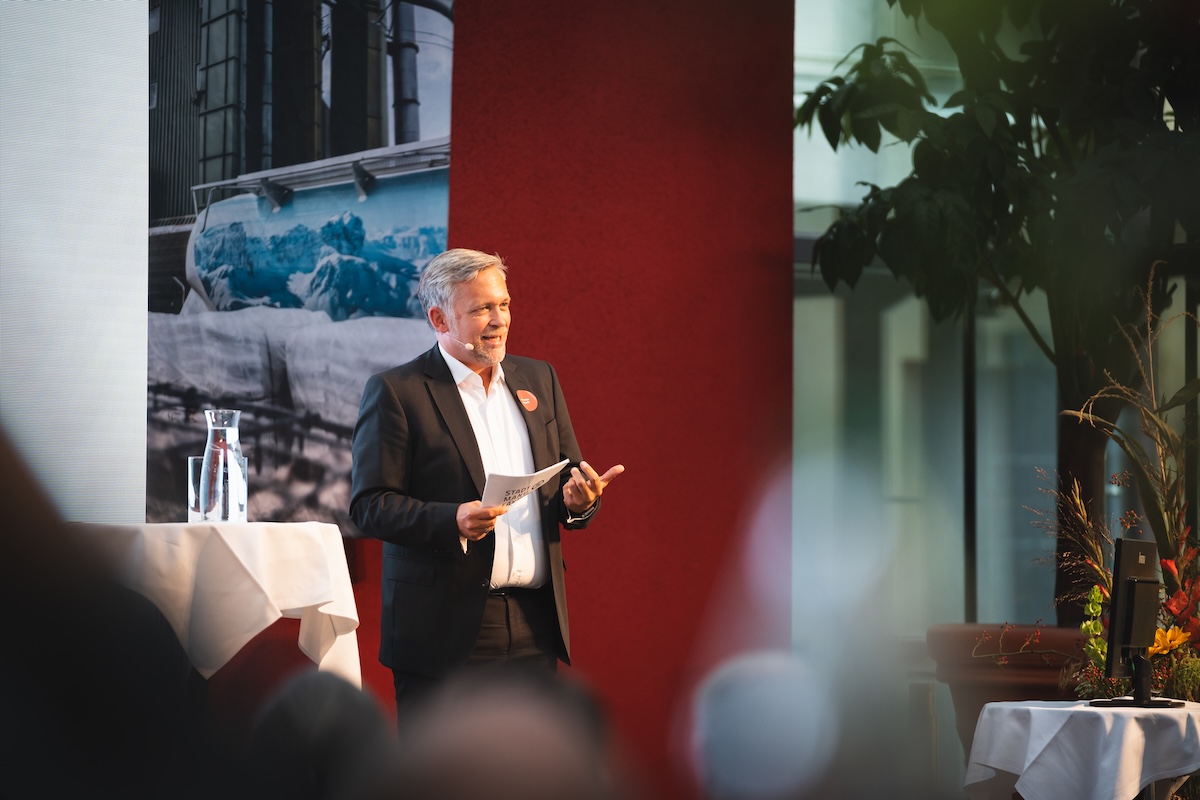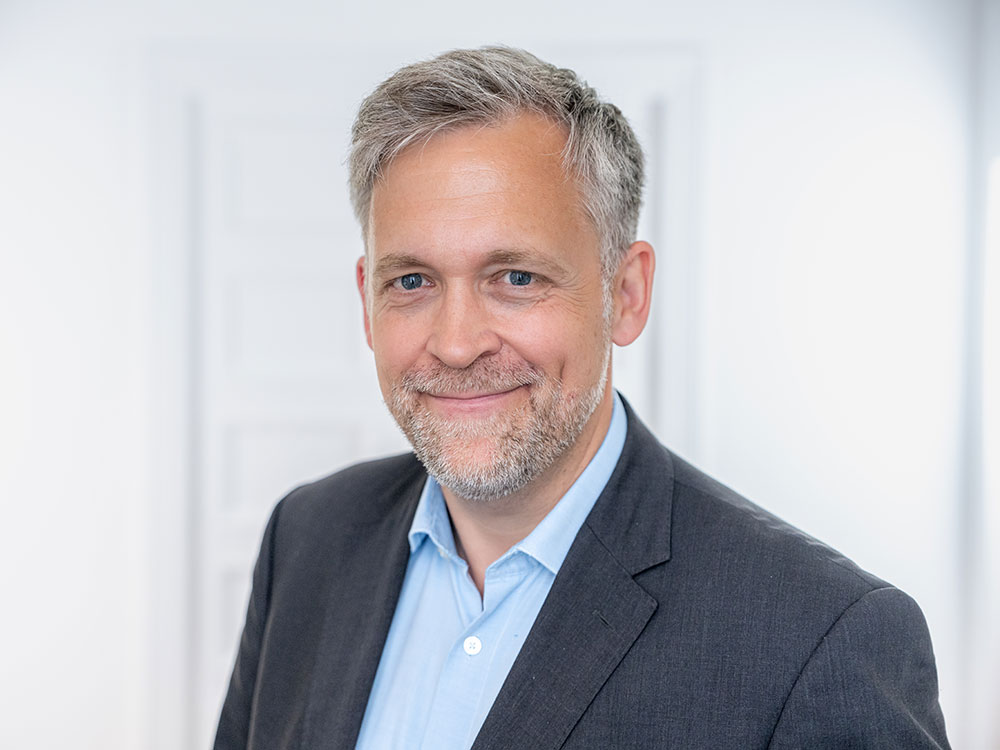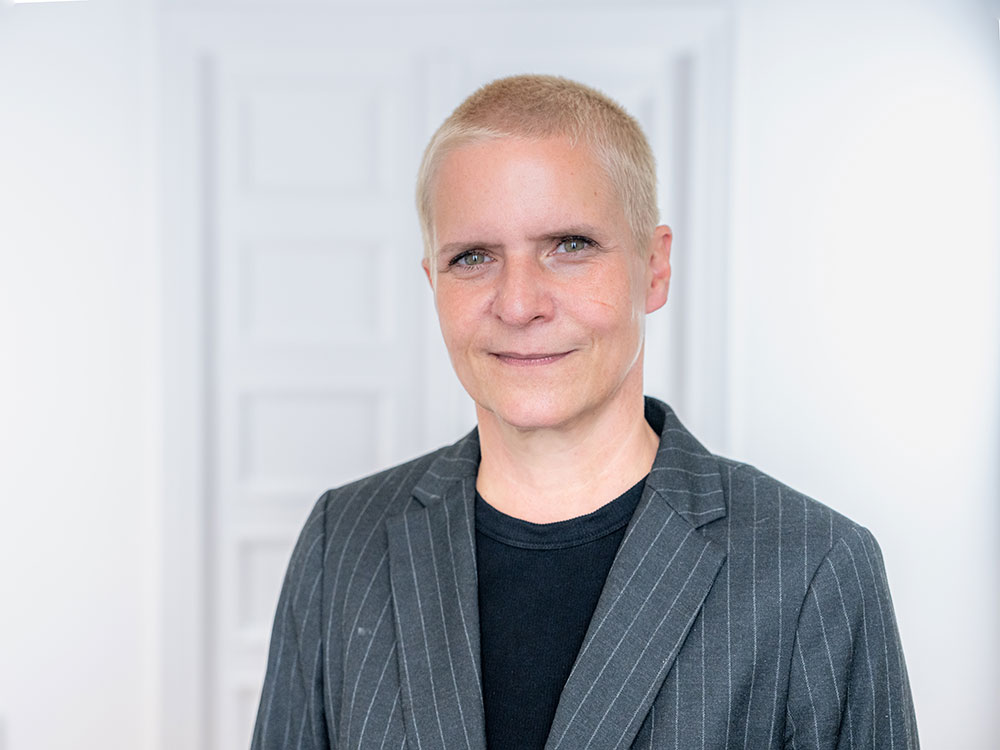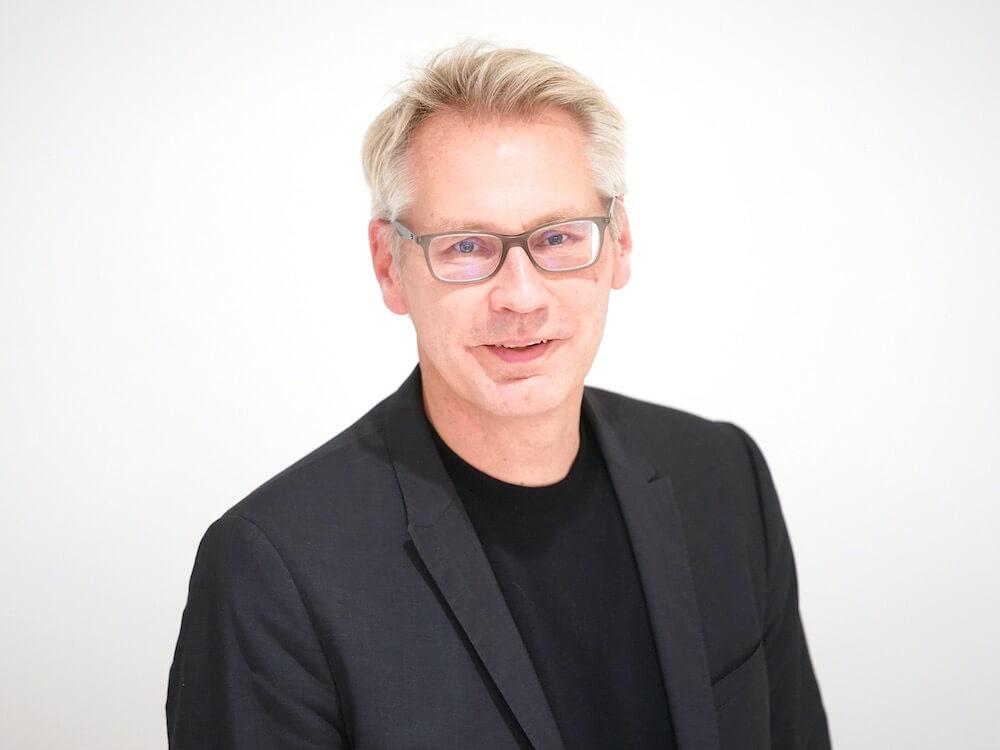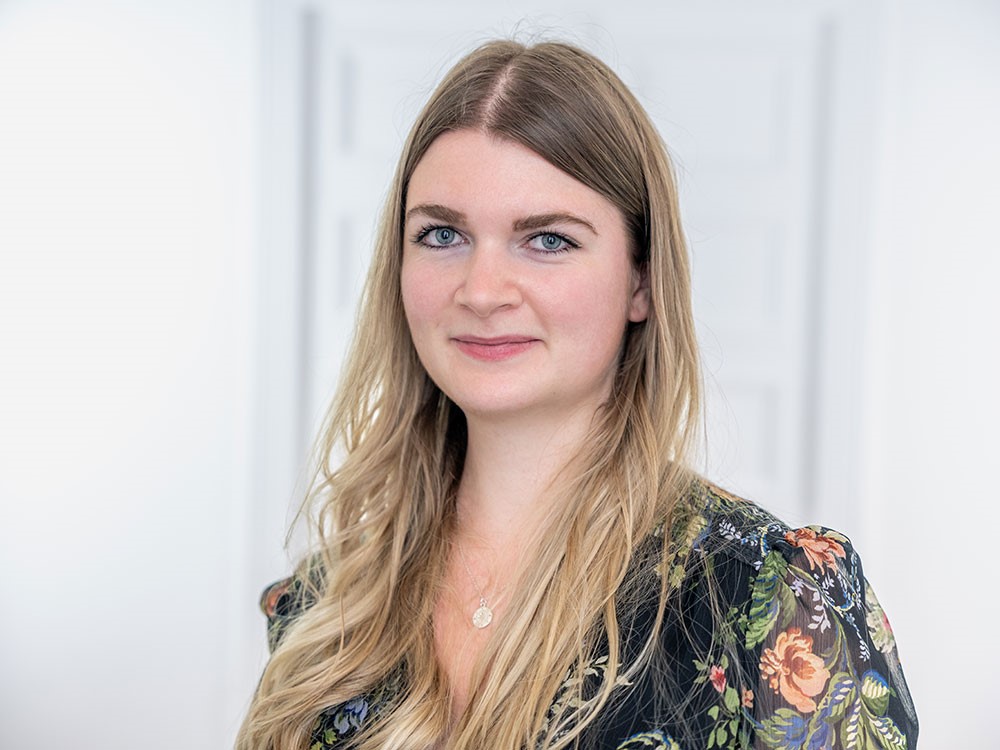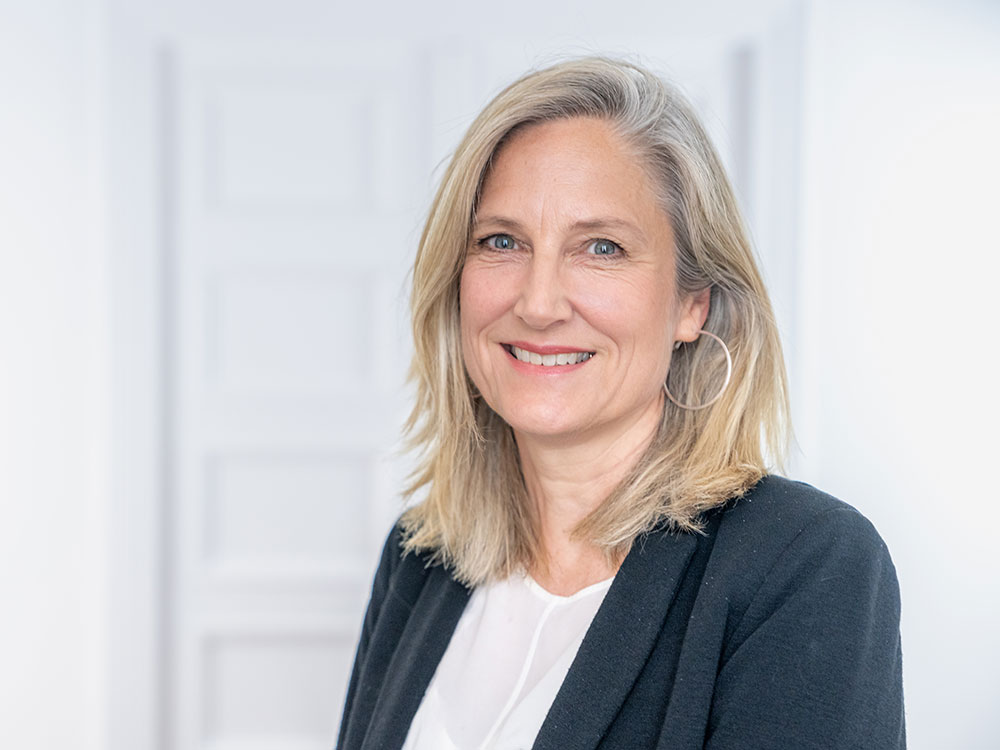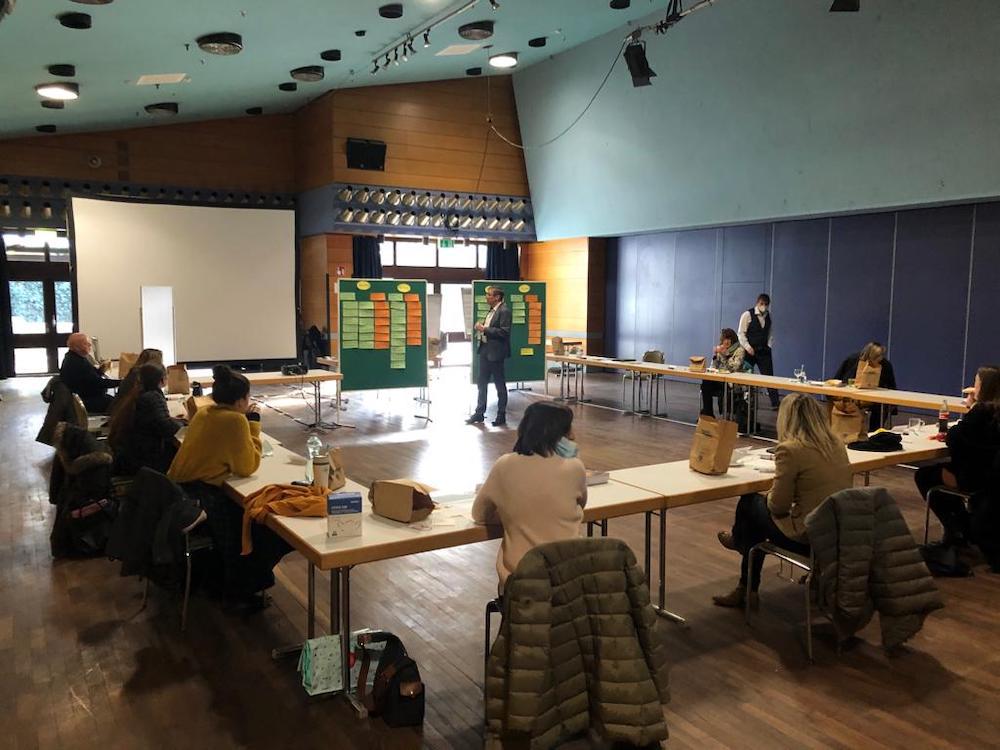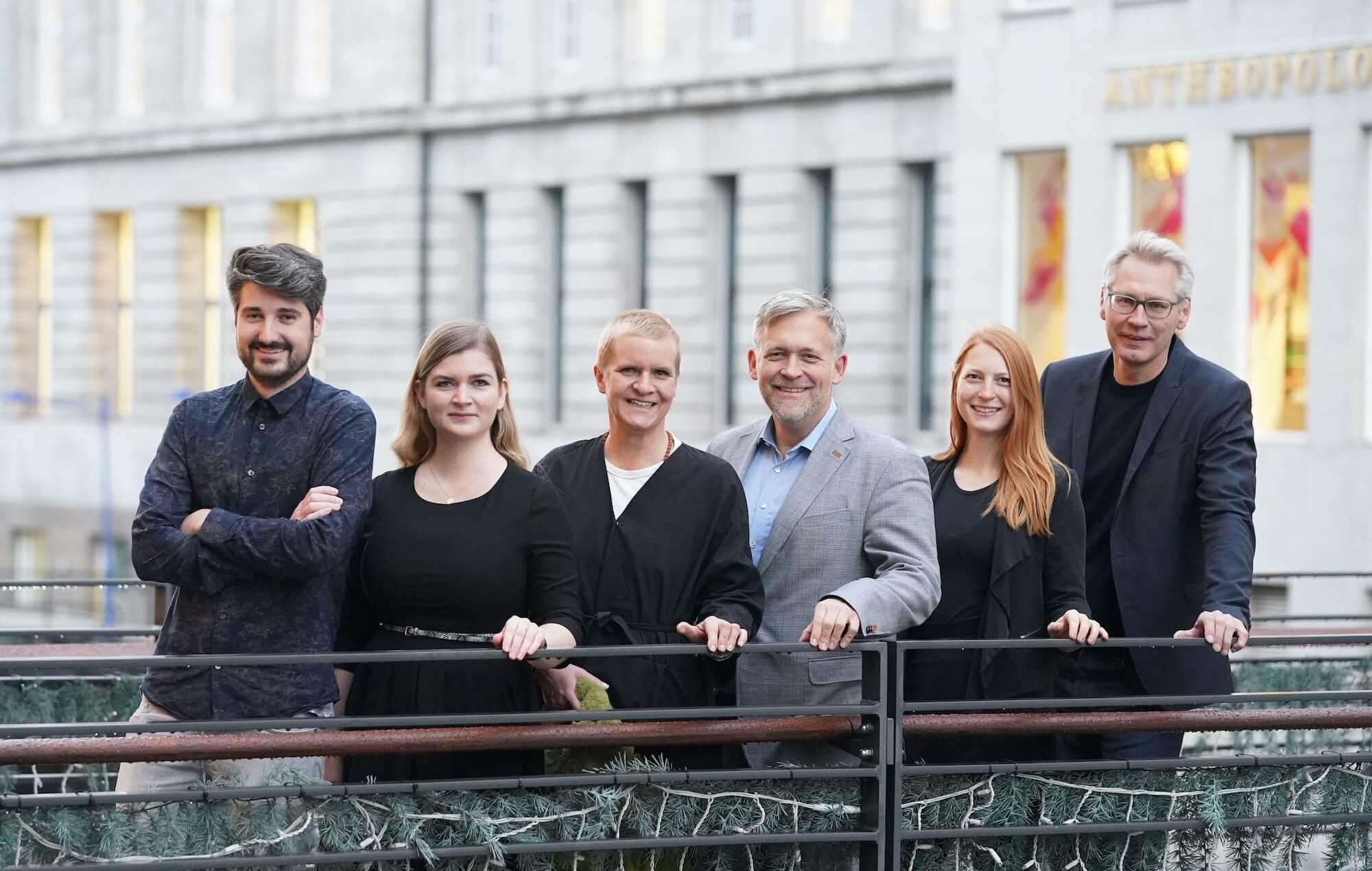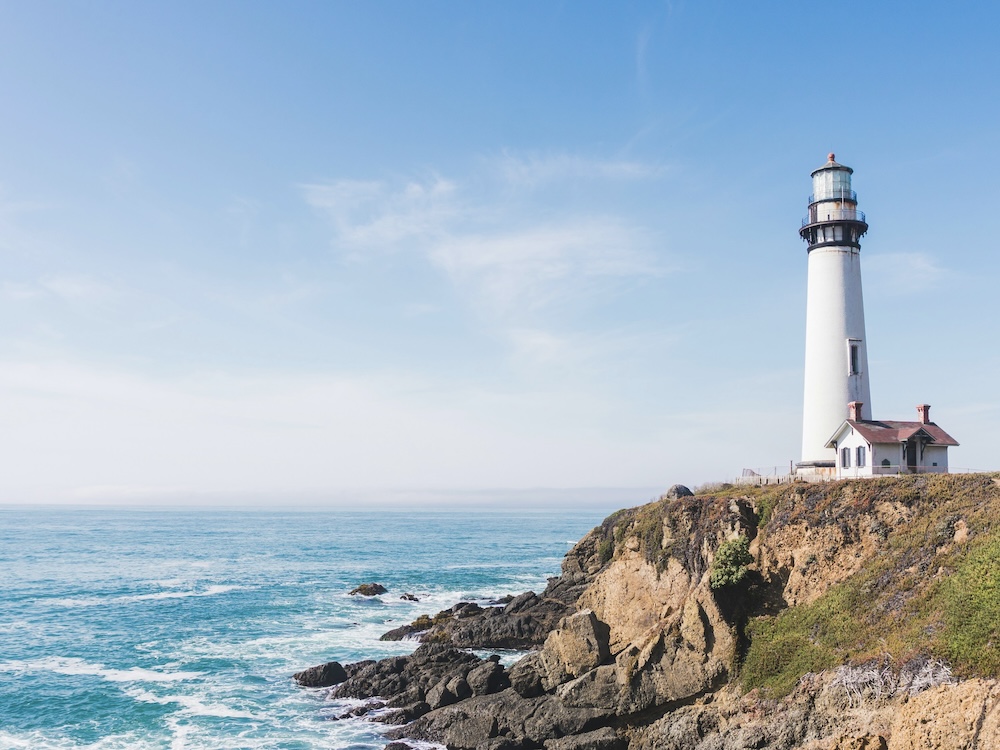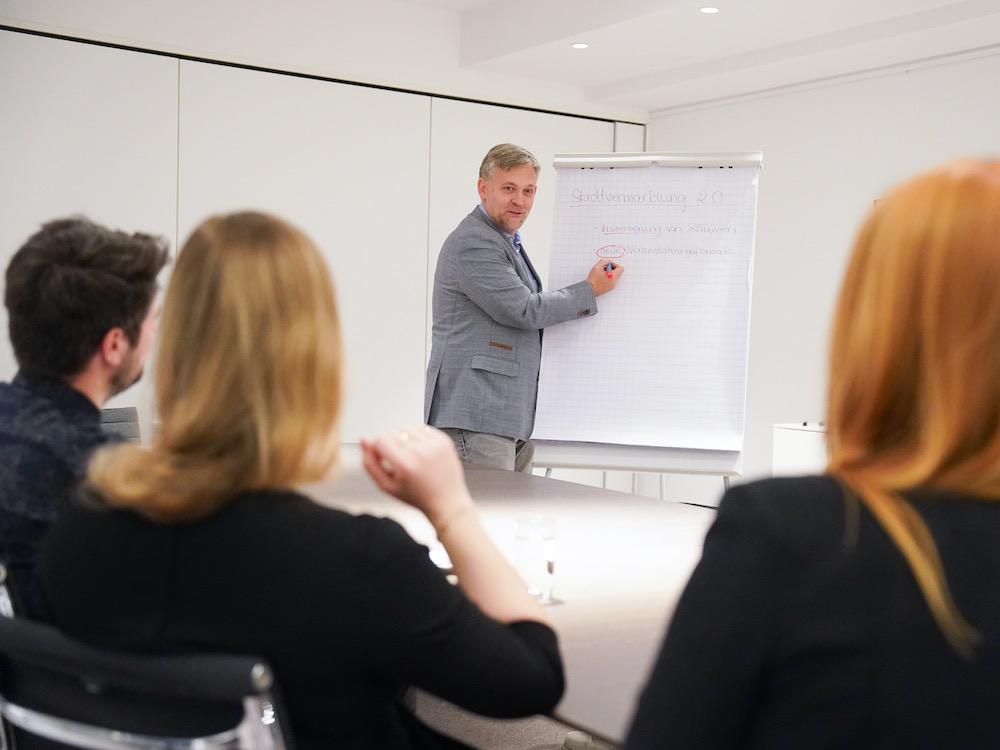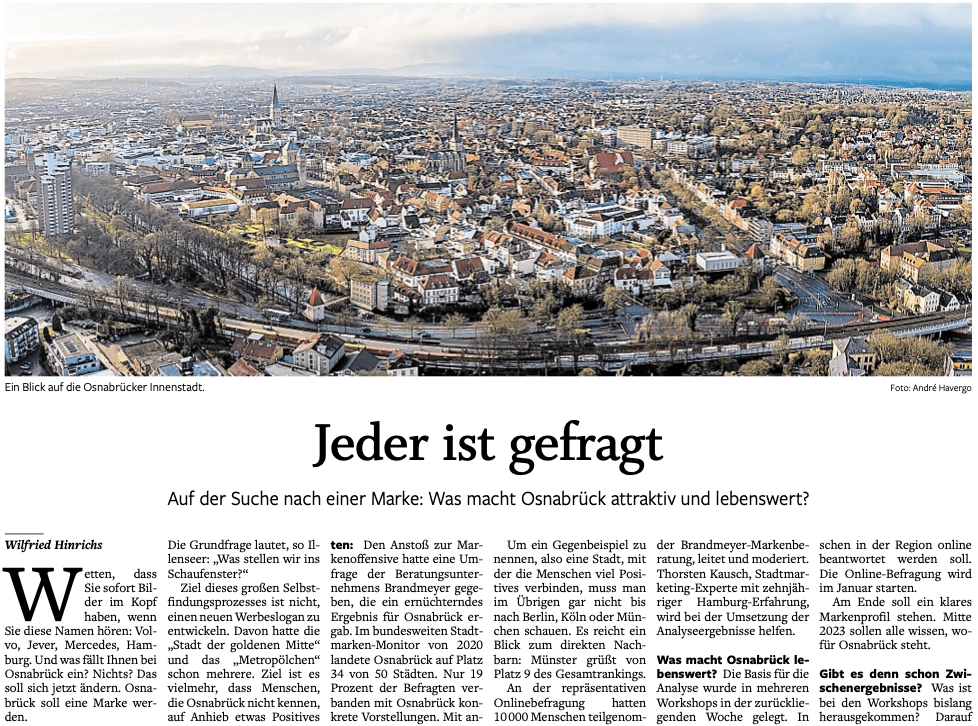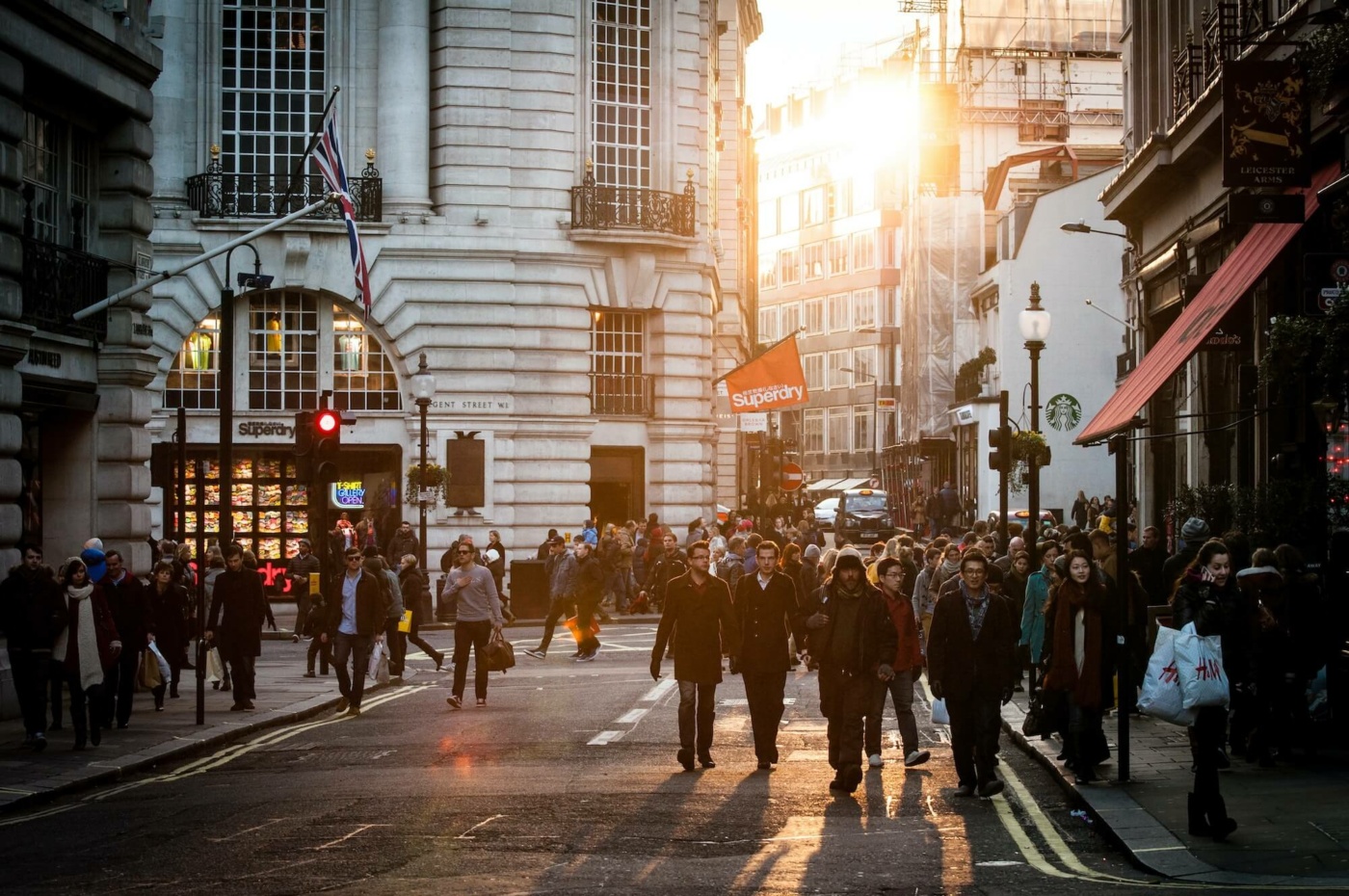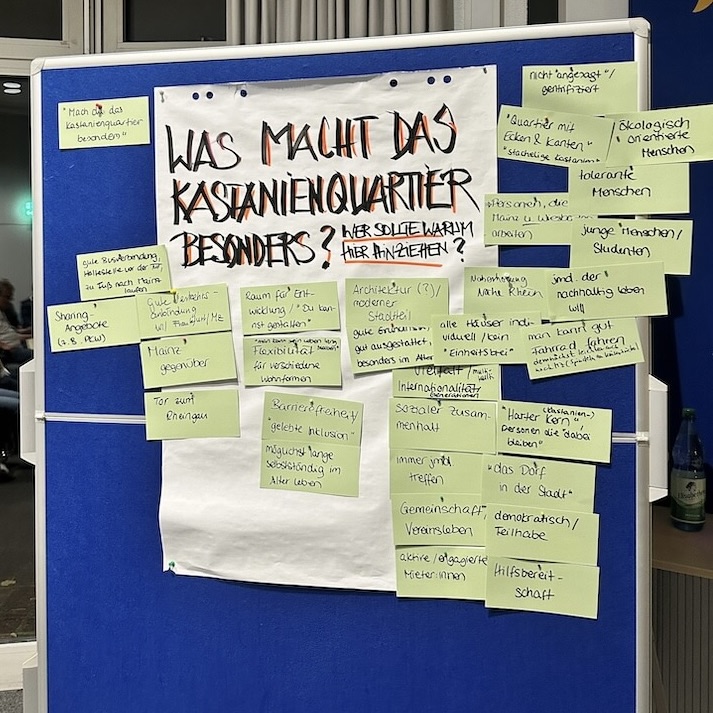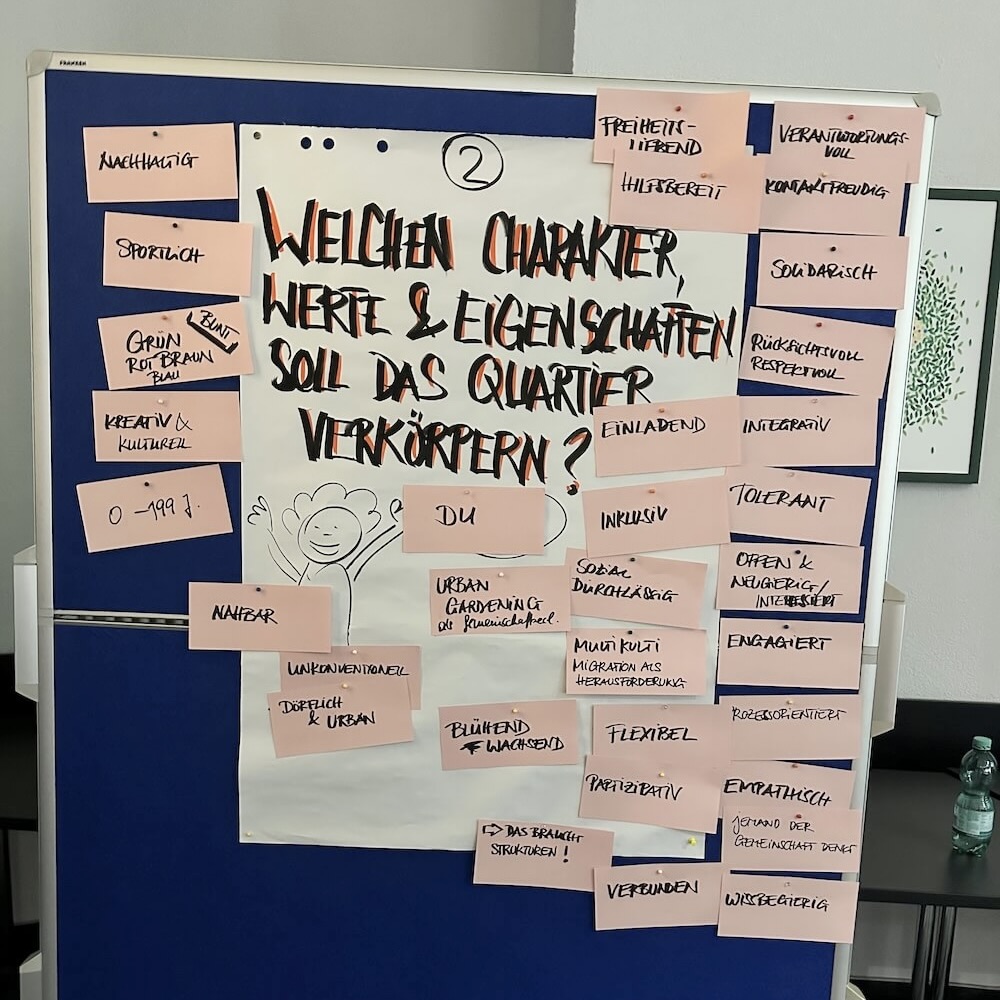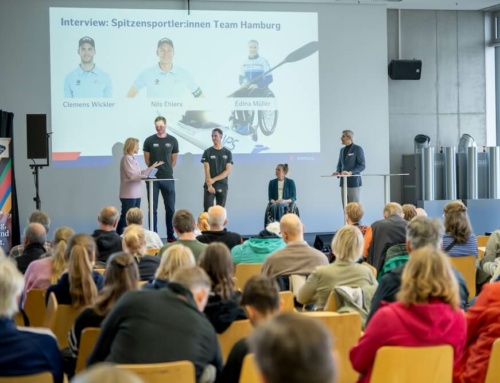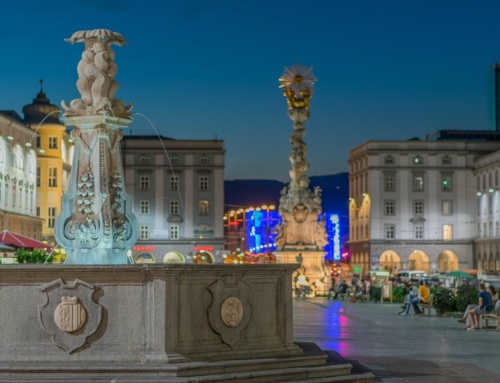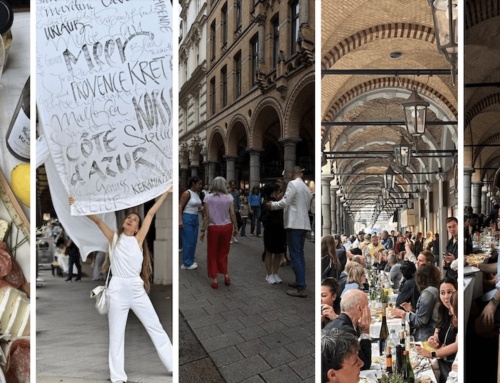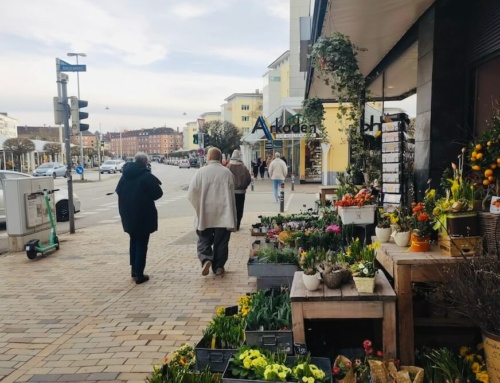Client: GWW Wiesbadener Wohnbaugesellschaft
Project period: June 2025 – ongoing
The project in brief
GWW Wiesbadener Wohnbaugesellschaft is developing the Kastanienquartier in Wiesbaden-Kastel – a sustainable, car-free urban quarter with affordable housing. We have been supporting the neighborhood development and neighborhood management as a strategic partner since June 2025.
Our tasks and roles at a glance:
- Development of utilization concepts for commercial and communal areas,
- Development of the neighborhood identity in cooperation with our partner agency Elbgraphen,
- Conception of a neighborhood management as well as coaching and sparring for GWW and
- Implementation of participation and event formats.
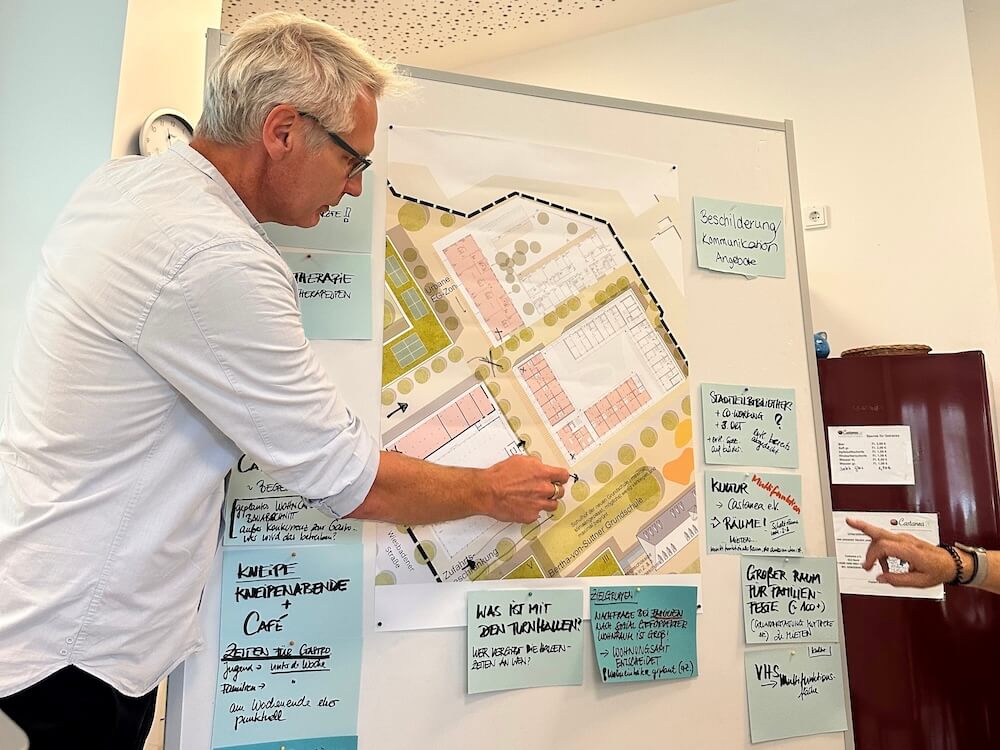
Stadtmanufaktur expert Mathias Sander is working on the utilization concepts: Which businesses should settle in the Kastanienquartier? How will communal areas be used?
Task and background
GWW is developing the Kastanienquartier in Wiesbaden-Kastel (project name: Modellquartier Kastel Housing Area (KHA)) with 272 partly subsidized rental apartments, a daycare centre, elementary school and sports hall, a neighbourhood garage and several commercial units. The aim is to create a sustainable, car-free and community-oriented district with a high quality of life.
The Kastanienquartier is intended to function as a central district center as well as a residential and meeting area in Kastel-West and provide an impulse function for the surrounding urban space “Wiesbadener Straße”. The focus here is on promoting the neighborhood, creating places of identification and implementing sustainable and ecological projects.
GWW has recognized this: To establish such a forward-looking neighborhood, strong concepts for sustainable neighborhood development are needed right from the development and implementation phase. concepts for sustainable neighbourhood development and a committed neighborhood management. This is the only way to take the needs of residents and businesses into account, defuse conflicts between interest groups at an early stage and build a neighborhood identity and community.
With the KHA as Wiesbaden’s first sustainable urban quarter, we are breaking new ground in urban and neighborhood development. What should it be like, the city we want to live in? Vibrant, sustainable and affordable? (…) The urban planning office and the environmental office of the state capital of Wiesbaden have therefore set out to deliberately use the KHA as a field of experimentation in order to find reliable answers to these questions.
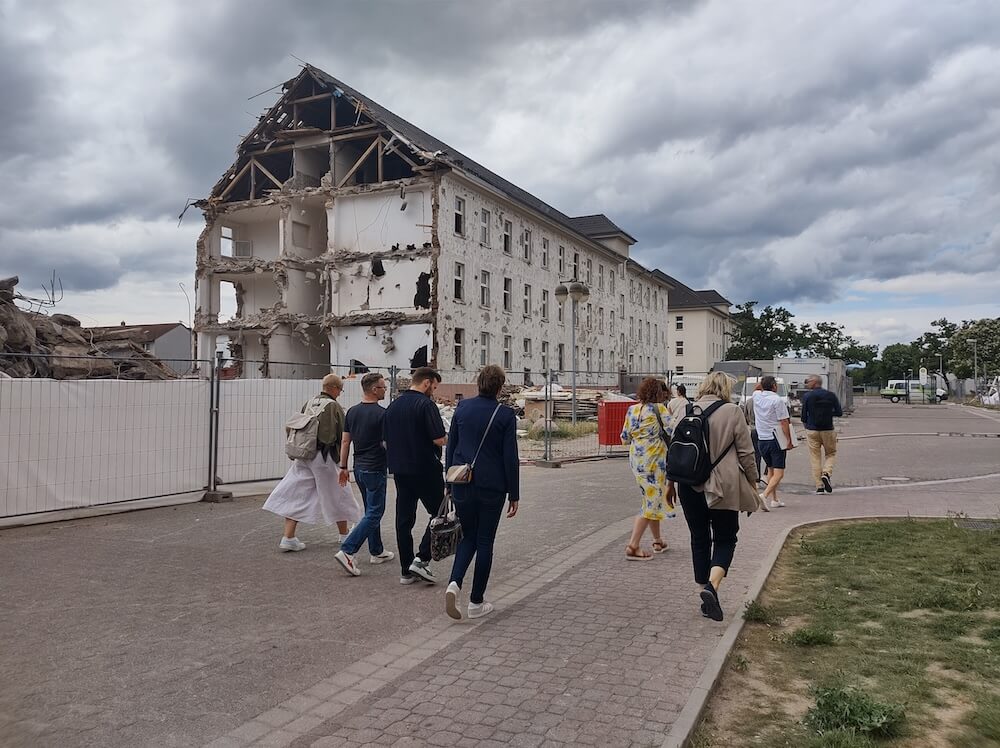
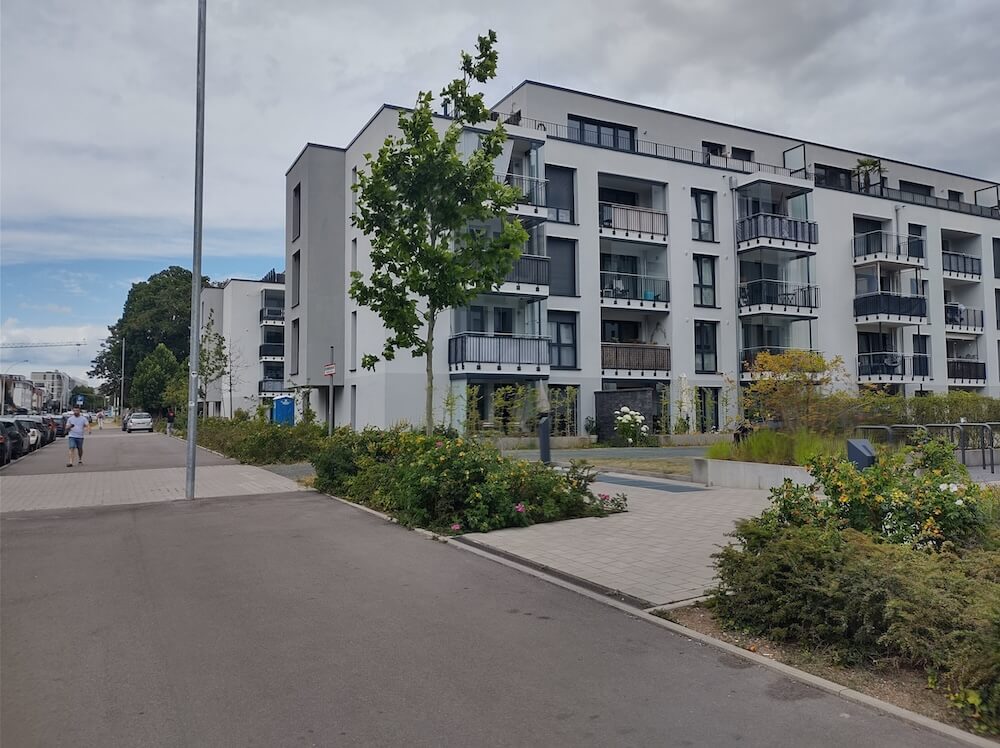
A district in transition: “Mainz-Kastel” becomes the “Kastanienquartier” – a former area with US barracks becomes Wiesbaden’s first sustainable urban district. Project manager Julia Staron (pictured left) on a walk through the city with other project managers
Our way of working
An identity-strong, inclusive and climate-oriented district that connects people, activates local economies and acts as a driving force for the Wiesbadener Straße urban space – with sustainable structures that are lived from the outset. We at Stadtmanufaktur are excited and proud to be able to play our part in this neighbourhood vision – with strategic know-how and implementation power.
The project started in 2025 with concept development, including initial participation formats. Our project roadmap includes measures up to 2027, with optional modules up to 2028.
Fields of action and measures
Location and needs analysis:
- Analysis of documents and data; on-site inspection
- Guideline-based discussions with stakeholders; development of a stakeholder map
- Derivation of target group requirements (housing, commerce, social infrastructure, mobility)
- Kick-off workshop with GWW and municipal stakeholders: project roadmap
Utilization concepts for business and the community:
- Determination of requirements and zoning of the first floor zones (local supply, gastronomy, crafts/services, creative industries) as well as the interior and exterior spaces
- “Uses” workshop with local stakeholders
- Comparison with developments in the surrounding area; conflict prevention residential ↔ commercial.
- from 2026: Creation of acquisition materials and active approach of potential tradespeople; advice on funding options and uses for the common good
Participatory neighborhood brand and communication:
- Definition of the brand identity (brand core, mission statement, tonality) – incl. Participation and co-creation
- Development of corporate design and core messages (in cooperation with the design agency Elbgraphen)
- Development of a communication concept (channels, measures, timing)
- Development of a neighborhood website (information, calendar, FAQ, digital participation if necessary), accompanying press and social media work
- Conception of an info box on site
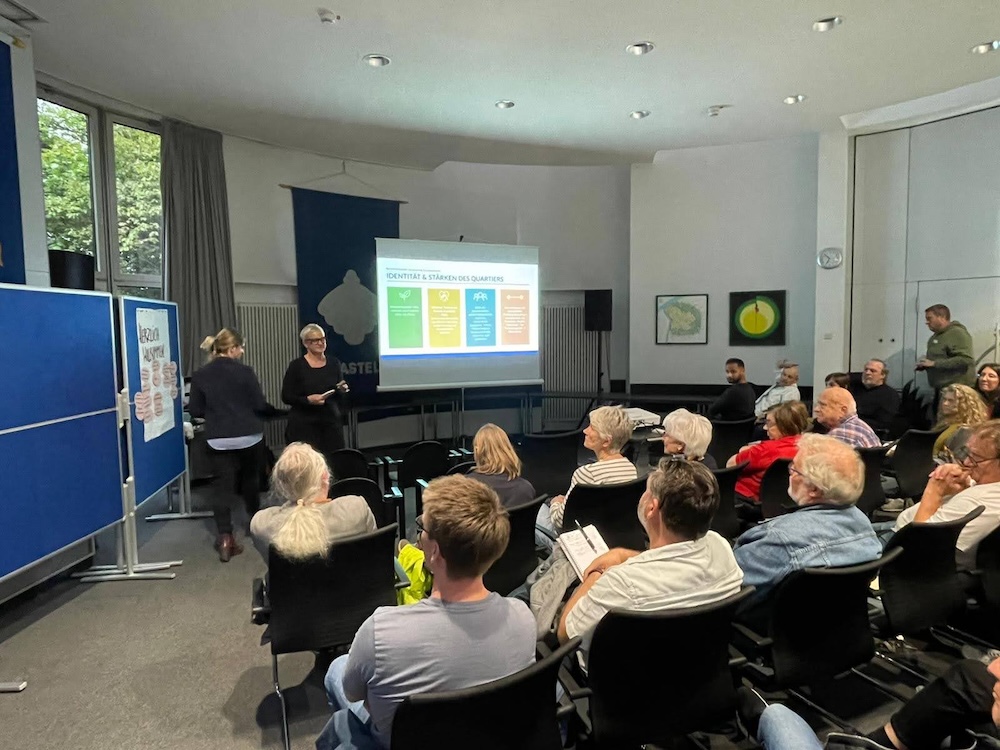
Participation as a principle: (potential) residents and stakeholders are informed in workshops – and encouraged to get involved
Participation formats and network development:
- Participation concept with formats for different stakeholder groups:
- Information evenings
- Workshops on specific topics (housing, business, mobility, sustainability)
- Neighborhood networking and neighborhood forum/council
-
Erection
a neighborhood office
- Cooperation with schools, social institutions, associations and initiatives
Implementation support and continuation:
- Development and coaching of GWW neighborhood management (empowerment, sparring, conflict moderation, process reflection)
- Supporting the establishment of the first commercial tenants; support with operating concepts for shared use and temporary interim use
- Documentation of results, monitoring and evaluation
The result: Success in Progress
Planning and tackling, listening and mediating, empowering and supporting: This is how we are supporting the Kastanienquartier project in Wiesbaden. In 2025, the concept development was in full swing, and in 2026 it will be implemented.
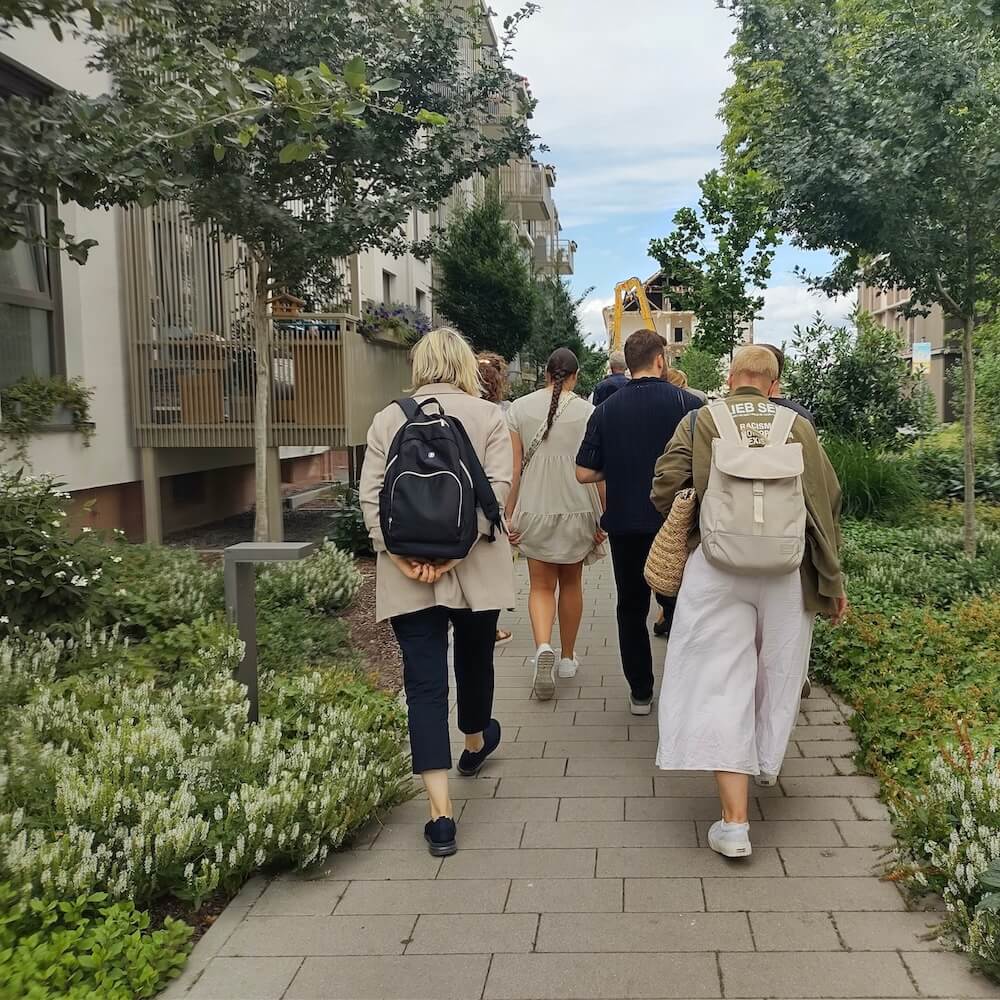
Between Wiesbaden and Mainz, between the banks of the Rhine and Restart: Wiesbaden-Kastel is reinventing itself
